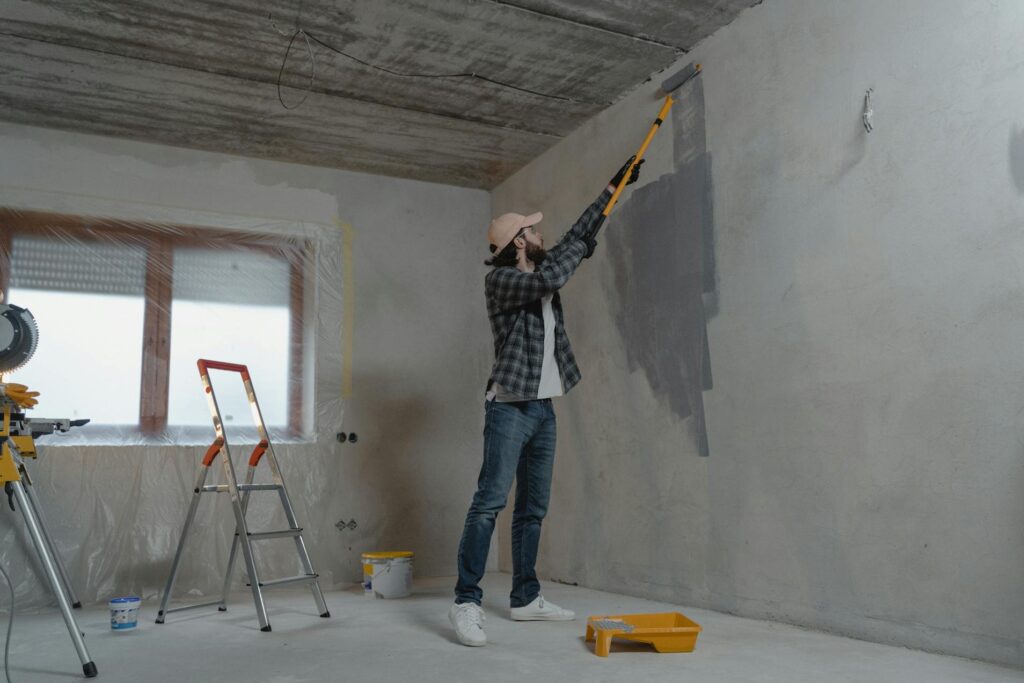Selling a house in poor condition can feel like an uphill battle. Maybe your home has suffered from years of wear and tear, or perhaps unexpected life events have left you unable to keep up with maintenance. You might be dealing with inherited property that’s seen better days, or you’re facing financial difficulties that make repairs seem impossible. Whatever the reason, the thought of putting a less-than-perfect house on the market is stressful. You probably have a million questions racing through your mind:
- Will anyone want to buy my house as-is?
- How much will I lose if I don’t fix it up?
- Is it even worth trying to sell?
The good news is, you’re not alone. Many homeowners find themselves in similar situations and successfully sell their homes without pouring money into extensive repairs. This guide is here to help you navigate the process with confidence and ease. We’ll provide practical advice, highlight key strategies, and offer reassurance that selling a house in poor condition isn’t just possible—it can also be straightforward and rewarding.
Ready to turn your situation around? Let’s dive in.
What Does Selling a House in Poor Condition Mean?
When we talk about selling a house in poor condition, what exactly does that mean? The term “poor condition” can vary, but it generally refers to properties that have significant issues affecting their appearance, functionality, or structural integrity. Here are some common characteristics of a house in poor condition:
Structural Issues
- Foundation Problems: Cracks in the foundation, uneven floors, or doors that don’t close properly can indicate serious foundation issues.
- Roof Damage: Missing shingles, leaks, or visible sagging can signal roof problems that need addressing.
Cosmetic Deterioration
- Peeling Paint: Both inside and outside, peeling or chipped paint makes a home look uncared for.
- Worn Flooring: Carpets, tiles, or hardwood floors that are stained, ripped, or damaged detract from the home’s appearance.
Outdated Systems
- Plumbing: Leaky faucets, outdated pipes, or water damage can indicate plumbing issues.
- Electrical: Old wiring, insufficient outlets, or non-functioning lights suggest electrical systems need updating.
General Wear and Tear
- Windows: Broken or drafty windows can make a home less energy-efficient and uncomfortable.
- Doors: Sticking doors, broken locks, or damaged frames can be a security concern.
Environmental Concerns
- Mold and Mildew: Visible mold or a musty smell can point to moisture problems.
- Pests: Signs of rodents or insects can be a major turn-off for potential buyers.
Aesthetic Neglect
- Landscaping: Overgrown lawns, dead plants, or neglected gardens can make a poor first impression.
- Clutter and Cleanliness: Excessive clutter, dirty surfaces, and general untidiness can distract buyers from seeing a home’s potential.
Understanding what constitutes poor condition helps set realistic expectations for the selling process. It also highlights areas that might need attention if you decide to make minor improvements before listing. Whether your home has a few minor issues or more substantial challenges, knowing the specifics can guide your next steps effectively.
All the Ways to Get a Fair Price When Selling a House in Poor Condition
Selling a house in poor condition doesn’t mean you have to settle for a lowball offer. There are several strategies to ensure you get a fair price. Here’s how you can maximize your home’s value:
Understand Your Home’s Value
First, it’s important to know what your house is worth. Start with a professional home appraisal. This gives you a solid foundation for pricing your house. In fact, you can also ask a real estate buyer like Grapevine to perform a Comparative Market Analysis (CMA). This analysis will show what similar homes in your area have recently sold for.
Do Nothing and Sell As-Is
Sometimes, doing nothing is the best option. Selling your home as-is means you don’t have to spend time or money on repairs. This approach saves you from stress and additional expenses. Real estate investors often look for homes they can buy as-is and renovate themselves. Plus, you can get a cash offer immediately and potentially close the deal faster.
No Repairs Required: Selling your home as-is means you don’t have to spend time or money on repairs. This saves you from stress and additional expenses.
Attract Investors: Many real estate investors are specifically looking for homes they can buy as-is and renovate themselves. These buyers are often willing to accept properties in any condition.
Quick Sale: Without the need for repairs or renovations, you can list your home immediately and potentially close the deal faster.
Make Minor Improvements
You don’t need to overhaul your entire home. Small repairs can make a big difference. For example, let’s say your house has a few cosmetic issues like chipped paint or loose door handles. Tackling these smaller jobs before listing can make the hefty price tag items (like the roof or HVAC system) that still have a few years of use left feel manageable rather than overwhelming to potential buyers. Here are a few things you can do:
Patch and Paint Walls
A fresh coat of paint can transform a room. It makes the space look cleaner and more inviting. Patch any holes or cracks in the walls, then apply a neutral color of paint. This gives buyers a blank canvas to envision their own style.
Cost: The cost to paint a room typically ranges from $200 to $500, depending on the size of the room and the quality of the paint.
Time: The time to patch and paint a room is typically 1 to 3 days, depending on the room size and drying times between coats.
Fix Leaky Faucets
A leaky faucet is an easy fix that can make a big difference. Dripping faucets can indicate to buyers that the home hasn’t been well-maintained. Replacing washers or cartridges can often solve the problem.
Cost: The average cost to hire a plumber to fix a leaky faucet ranges from $45 to $150.
Time: Fixing a leaky faucet usually takes about 30 minutes to an hour, depending on the complexity of the issue.
Replace Broken Fixtures
Updating old or broken fixtures can give your home a modern look. This includes light fixtures, cabinet handles, and door knobs. Opt for stylish yet affordable replacements to enhance the overall aesthetic.
Cost: Replacing fixtures can cost between $100 and $500, depending on the number of fixtures and their quality.
Time: Replacing fixtures generally takes 1 to 2 hours per fixture, depending on the type and installation complexity.
Improve Curb Appeal
First impressions matter. Simple landscaping tasks like mowing the lawn, trimming bushes, and planting flowers can boost your home’s curb appeal. Repainting the front door and adding new house numbers can also make a positive impact.
Cost: Basic lawn care services typically cost between $50 and $100, while a more comprehensive landscaping project can range from $300 to $800.
Time: Improving curb appeal can take anywhere from a few hours to a full day, depending on the scope of the work.
By addressing these minor improvements, you can significantly enhance your home’s appeal without breaking the bank. These small changes can make a big impact, helping you attract more buyers and achieve a fair price for your property.
Consider Multiple Selling Options
Explore different selling methods. A traditional sale through a real estate agent can help you reach a wide audience. Cash buyers, like real estate investors, often purchase homes as-is and can close quickly. Selling at auction is another option. Auctions can sometimes fetch a higher price if multiple buyers are interested.
Traditional Sale: Listing with a real estate agent can help you reach a wide audience and get professional negotiation support.
Cash Buyers: Real estate investors and cash buyers often purchase homes as-is and can close quickly.
Auction: Selling at auction can sometimes fetch a higher price if multiple buyers are interested.
You’re Selling a House in Poor Condition
We understand that selling a home in poor condition can be stressful. But remember, many people have been in your shoes. You’re not alone, and there’s no judgment here. Your home has value, and with the right approach, you can get a fair price.
If you’re ready to take the next step and want to avoid the hassle of repairs and upgrades, consider contacting Grapevine. We specialize in buying homes as-is, providing you with a fair, no-obligation cash offer. It’s quick, straightforward, and stress-free.
Visit Grapevine for your free cash offer today and see how easy selling your home can be.
You deserve a smooth, hassle-free sale. Let Grapevine help you achieve it.







